
Going With The Flow
On painting holidays and at workshops and classes at home, when I ask students what they want to achieve with their art, the answer is almost always the same: to be looser. It’s an almost ubiquitous desire amongst painters and it isn’t restricted to callow beginners either. I remember demo’ing at a trade fair in London several years ago and looking up from my work, was chagrined to see none other than Ron Ranson, the doyen of big brush watercolours, frowning down at the puddles I’d created. I’d spotted him earlier at a large stand on the ground floor, ‘performing’ for parties of thirty, while I was upstairs with an audience of one or two – if I was lucky.
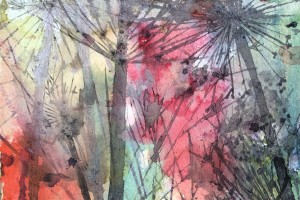
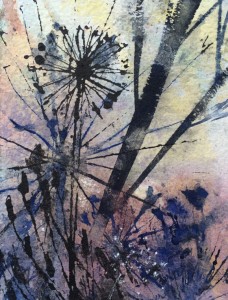
“H’mm,” he’d said, peering hawk-like at the puddles I’d made on my Two Rivers Paper, “I can see I’m going to have to get looser.”
That looseness, however, isn’t a thing you just decide to do; it’s a product of time; of years and years of practice. It’s born of the intimacy one has with painting itself; the knowing when one has just the right amount of colour on the brush, for example and how wet your paper needs to be. These things can be learned, but they cannot be taught. How do you teach a child to ride a bicycle, for example? You may point to the brakes and the pedals, but then what? Don’t you just hold on while they work it out for themselves? And then, when they find their balance, don’t they have to constantly adjust to the speed of the bike and be sensitive to any perturbations in the road surface? Spills may be inevitable, but the sense of freedom is worth every graze.
Corollary to that looseness, the other thing that painting students long to be able to do is to simply splash paint around and to play, but to somehow magically arrive at a result that pleases them into the bargain. Like riding a bicycle, this actually requires a certain discipline. One has to be constantly watchful of one’s colours and mindful of any change that takes place on the picture surface. In my experience, when mixing two colours together on the paper, the best you can do is steer in the general direction you wish to go, but be prepared to take an unexpected turn if the situation demands it.
Certain subjects lend themselves more readily to this kind of approach, like the semi-abstract alliums you see above.
And before I began, I tried out a few paint effects, like using cling-film and scraping the paint with a credit card. I also made certain that I had at least two paintings taped to my board and on the go at the same time, so that I could work on one while the other dried. The surface is built up over several hours or days, even. Eventually, a mark or two will appear that you know what to do with and you push the paint around, but only for a second, or you tip the board up and let gravity do the work instead. Then it’s back to watching paint dry. Sometimes, the process feels more like irrigation than painting. Humidity, surface tension and viscosity all play their part and it’s humbling to think that the forces of nature will play an equal role in the creation of your work. Oh, and a nearby sink and a carefree attitude as buckets of your best pigment are washed down the plughole are absolute essentials.
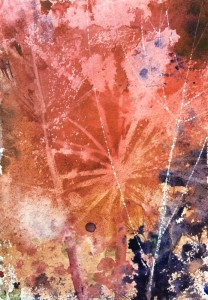

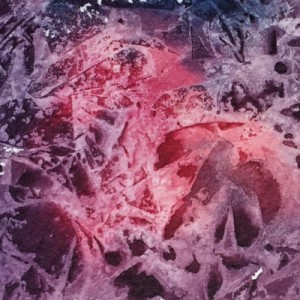
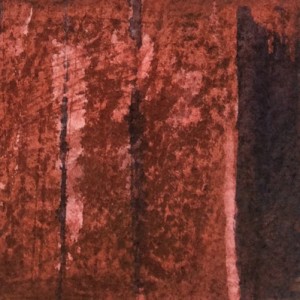
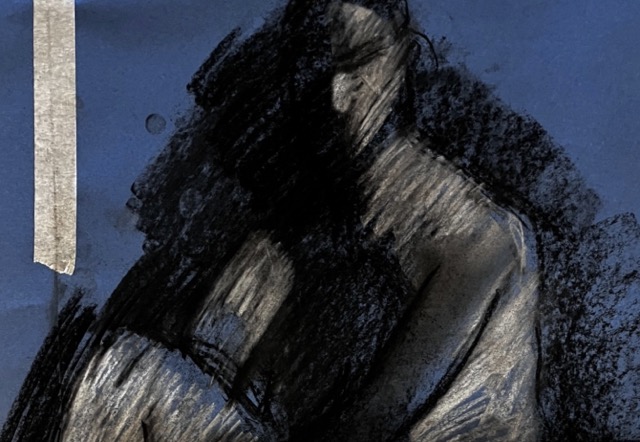




This Post Has 0 Comments